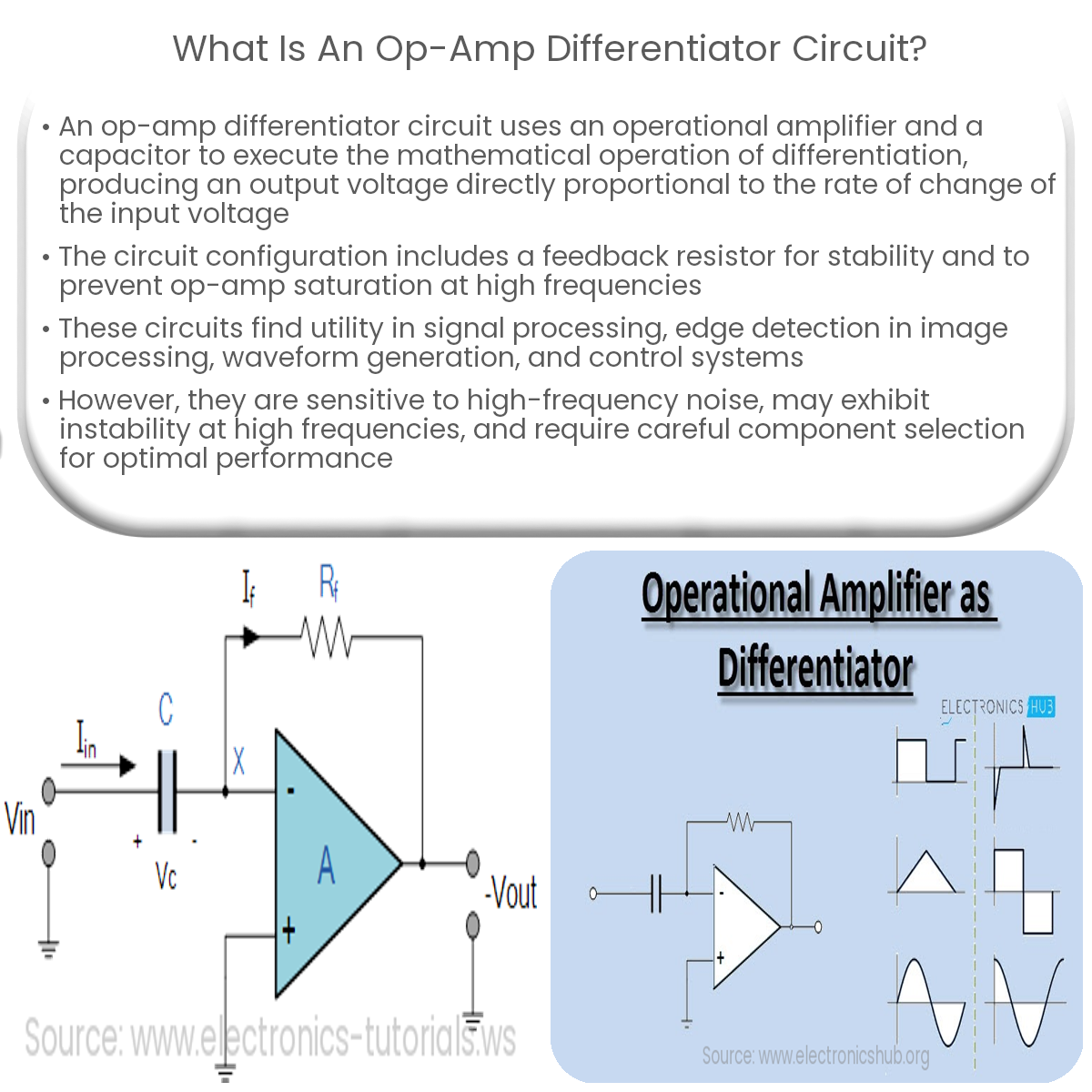An op-amp differentiator circuit uses an operational amplifier and a capacitor to differentiate an input signal, producing an output proportional to the input’s rate of change.
Introduction to Op-Amp Differentiator Circuit
An op-amp differentiator circuit is an electronic circuit that uses an operational amplifier (op-amp) and a capacitor to perform the mathematical operation of differentiation. Differentiation is a process of finding the rate of change of a signal with respect to time. In this circuit, the output voltage is proportional to the rate of change of the input voltage.
Basic Operation of an Op-Amp Differentiator
An op-amp differentiator consists of an inverting op-amp configuration with a capacitor connected between the input and the inverting terminal of the op-amp. A feedback resistor is connected between the inverting terminal and the output terminal of the op-amp. The non-inverting terminal is grounded.
The capacitor allows high-frequency components of the input signal to pass through while attenuating low-frequency components. As a result, the output voltage is directly proportional to the derivative of the input voltage. The feedback resistor provides stability to the circuit and prevents the op-amp from saturating at high frequencies.
Applications of Op-Amp Differentiator Circuits
Op-amp differentiator circuits are used in various applications, such as:
- Signal processing: Differentiators are used to process and analyze signals in communication systems, control systems, and instrumentation.
- Edge detection: In image processing, differentiators can detect edges and transitions within an image by identifying rapid changes in pixel intensity.
- Waveform generation: Differentiators can produce differentiated waveforms from input signals, useful for testing and analysis purposes.
- Control systems: Differentiators can be used in feedback control systems to improve system stability and performance by compensating for phase lag.
Limitations and Practical Considerations
While op-amp differentiator circuits offer several advantages, there are some limitations and practical considerations to be aware of:
- Noise sensitivity: Differentiator circuits tend to amplify high-frequency noise present in the input signal, which can degrade the output signal quality.
- Stability issues: Differentiators may exhibit instability at high frequencies. To ensure stability, it is necessary to limit the bandwidth using a feedback resistor or additional components.
- Component selection: The performance of an op-amp differentiator circuit depends on the quality and characteristics of the op-amp and passive components. Careful selection is crucial for optimal performance.
In summary, an op-amp differentiator circuit is a useful tool for signal processing and other applications that require differentiation. By understanding its operation, limitations, and practical considerations, designers can effectively implement this circuit in various systems.


